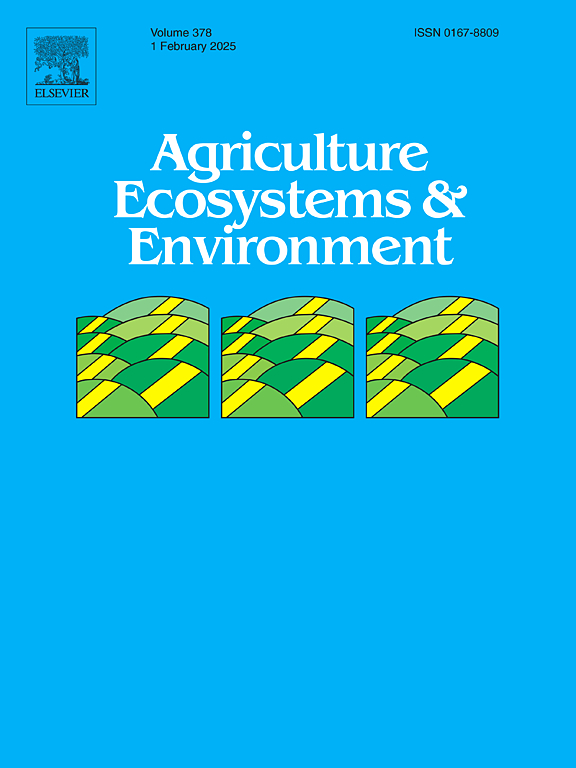Contrasting grazing practices alter plant community trajectories across western Canada’s grasslands with implications for ecosystem function
IF 6
1区 农林科学
Q1 AGRICULTURE, MULTIDISCIPLINARY
引用次数: 0
Abstract
Livestock grazing influences grassland biodiversity and ecosystem function. We report on the effects of adaptive multi-paddock (AMP) grazing (characterized by extended recovery periods between pulsed high animal density grazing events) on plant community composition and diversity across western Canada, compared to neighboring properties managed with conventional grazing (n-AMP). We also evaluated the influence of grazing practices, specifically stocking rate, cattle density, and variations in rest-to-grazing ratio at the start of the grazing season on plant community composition and diversity. We further explored the relationship between soil organic carbon (SOC) and plant diversity. Overall, AMP grazing, and specifically the use of high rest-to-grazing ratios early in the growing season, increased the proportion of non-native species. Native grasslands without prior cultivation had greater plant species richness, with fewer non-native species and containing phylogenetically more divergent plant communities, independent of grazing practices. The n-AMP pastures had higher functional trait dispersion, a pattern especially pronounced for tame (previously cultivated and seeded) pastures, and those with lower cattle stock densities (animals per unit area). Greater SOC was associated with communities higher in non-native plants, of lower species richness, and greater phylogenetic divergence, while no trend was identified for functional dispersion. Overall, AMP grazing did not increase plant species richness, functional diversity, or phylogenetic diversity. Instead, pulsed rotational grazing, specifically using high stock densities and extended rest periods, facilitated non-native species prevalence and reduced functional diversity. However, non-native species and lower overall species richness may benefit SOC accumulation, illustrating the challenges associated with building biodiverse plant communities with a high capacity for climate change mitigation.
求助全文
约1分钟内获得全文
求助全文
来源期刊

Agriculture, Ecosystems & Environment
环境科学-环境科学
CiteScore
11.70
自引率
9.10%
发文量
392
审稿时长
26 days
期刊介绍:
Agriculture, Ecosystems and Environment publishes scientific articles dealing with the interface between agroecosystems and the natural environment, specifically how agriculture influences the environment and how changes in that environment impact agroecosystems. Preference is given to papers from experimental and observational research at the field, system or landscape level, from studies that enhance our understanding of processes using data-based biophysical modelling, and papers that bridge scientific disciplines and integrate knowledge. All papers should be placed in an international or wide comparative context.
 求助内容:
求助内容: 应助结果提醒方式:
应助结果提醒方式:


